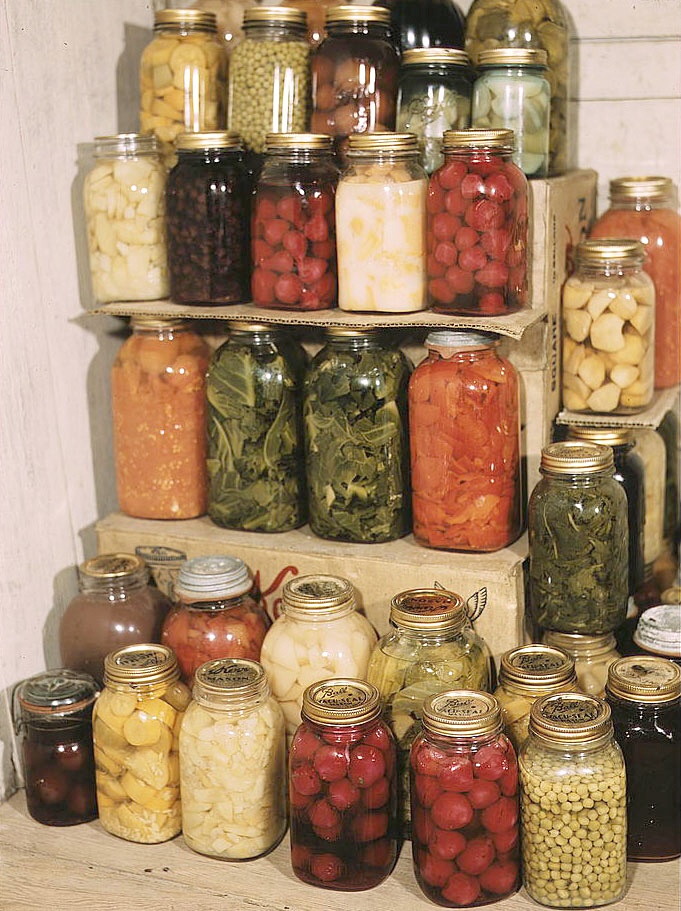By Carie Birkmeier EBS STAFF
Any food will spoil over time unless steps are taken to preserve it. Preservation refers to techniques that are used to prevent foods from going bad due to microorganisms such as yeast, bacteria or fungus forming on or within the food. Canning, pickling, freezing and drying are a few methods of preserving food so that it can be safely enjoyed for longer periods of time.
The three factors that cause a food to spoil are air, moisture and temperature. Eliminating one or more of these factors allows for foods to be preserved.
Freezing
Most types of yeast and bacteria grow between the temperatures of 40-140 degrees. When temperatures are lowered below 40 degrees, it slows the growth of pathogens, hindering them from reproducing. Place foods you wish to freeze into a freezer bag and remove as much air as possible before sealing the bag to prevent freezer burn.
Most foods can be frozen, including meat, vegetables, fruits, nuts and prepared foods. It is helpful to freeze fruits and vegetables in batches on a baking tray, and place the frozen items into the bag once frozen. This way they won’t freeze together. Some foods’ texture may change slightly when frozen, especially fruits and vegetables with softer flesh. Keep that in mind when choosing a preservation technique. Avocados are one of my favorite items to freeze. Remove the skin and pit, place in an airtight bag and use when you need a last minute batch of guacamole!
Canning
This common method of preservation consists of sealing foods in a sterilized container. The term canning doesn’t only apply to the use of cans; jars can also be used. This process removes the oxygen necessary for most microbials to grow and utilizes an acid or salt to further inhibit the survival of unwanted organisms.
Foods for canning are first prepared in some way—peeled, sliced, diced or treated in another fashion—then put into the container. The container is then placed into a hot water bath, which forces oxygen to rise above the food and out of the container, while the heat kills any pathogens that may cause the food to spoil.
Drying
By dehydrating or drying foods, a large majority of the food’s water content is removed, inhibiting the growth of bacteria. This method is among the oldest means of preservation and was once achieved by simple sunlight and wind. Today, modern day appliances like dehydrators and techniques such as freeze-drying have made this method much more practical and accessible for home cooks.
One of the most important factors to consider when drying food is to ensure that the drying is complete before spoiling can occur. A helpful tip is to cut the product into thinner and smaller pieces to expedite the drying process. Drying herbs from your garden is a great way to be able to use the bounty throughout the winter months. Dehydration is also a great option for making snacks such as beef jerky and dried fruit.
Salting
Salting is a variation of drying but typically does not remove moisture entirely, as in the case of drying. High levels of salt make for an undesirable environment for microbial growth, hence its use as a preservative. Because such large amounts of salt are needed for this technique, the results will subsequently taste very salty. Meats like salami or prosciutto use salting as part of the curing process. Other types of salt-cured foods are anchovies and olives.
Fermentation
The oddball of this list, fermentation is technically a method of food spoilage. But rather than cultivating bad bacteria and yeast, a controlled environment allows for good bacteria to grow, as opposed to varieties that can make you sick. The end result is a safe-to-eat, uniquely tangy product. As an added bonus, these good bacteria have been proven to be good for your digestive and immune systems, so eat up! Some common examples of foods that have been preserved through fermentation are sauerkraut, kimchi and yogurt.
Now that our gardens’ growing season is coming to a close and most of us are harvesting the final bounty, consider trying some of the above techniques to prolong the enjoyment of spring and summer flavors throughout the winter months. Freezing and drying are less complicated than fermentation and canning, but learning these latter techniques is especially worthwhile for those with large quantities of product to preserve.
Many of these methods have been used for centuries and perfected over time. There are countless resources available should you wish to delve more deeply into any one of them, both online and in cookbooks. So this year, instead of giving the bounty of your garden to friends and family, why not give preservation a try?














